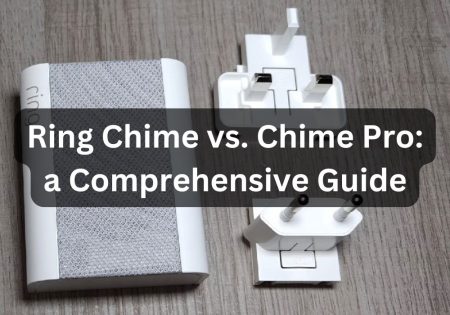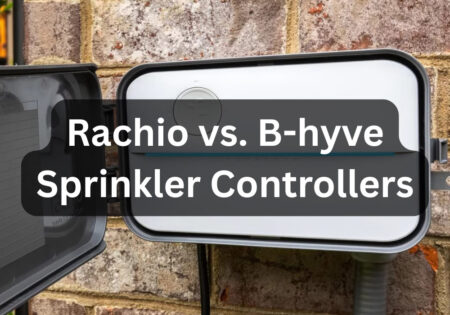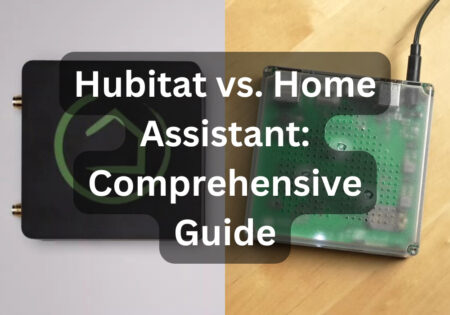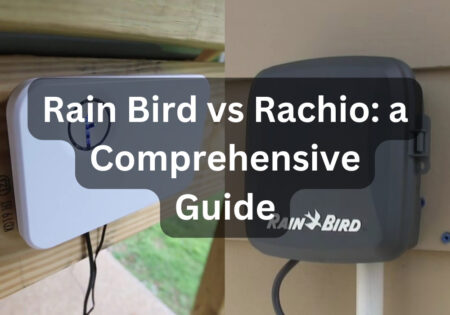A Samsung dryer not heating up is an annoying issue that often happens with this Samsung device. The case of a Samsung dryer not getting hot can either mean it doesn’t reach the desired temperature or refuses to heat at all. The issue is usually related to the device’s heating element, thermal fuse, ventilation, or drum rollers and bearings.
How to Deal with a Samsung Dryer not Heating Up? (Quick Answer)
Here’s how to deal with a Samsung dryer not getting hot:
- Check Power Supply: Make sure that the outlet your dryer is plugged into is 240V and well-functioning, and ensure the plug is secure.
- Verify Settings: The device shouldn’t be on “Air Fluff” or no-heat settings.
- Inspect Heating Element: Unplug the dryer, remove the rear panel, and check if the coils are broken; replace them if necessary. (Jump to Troubleshooting)
- Check Thermal Fuse: Unplug the dryer, access the fuse and remove it. Use a multimeter to inspect the fuse: if the multimeter beeps or shows a reading close to zero, the fuse is OK; if the multimeter shows no change or a very high resistance, the fuse is dead. (Jump to Troubleshooting)
- Clean Vents: Unplug the dryer. Clean the lint trap, ventilation hose, and external vent. (Jump to Troubleshooting)
Following the steps above, you can overcome the Samsung dryer not heating up issue. These are only a concise version; Moving forward, this tutorial offers detailed instructions to diagnose and resolve common heating issues, ensuring your appliance dry the clothes properly again. You could also fill in the form provided below if you need further assistance.
Understanding the Basics of Your Samsung Dryer
Gain an understanding of the fundamental features and configurations of your device before beginning troubleshooting a Samsung dryer not heating up. With this information, heating-related problems can be accurately diagnosed and treated.
Many drying cycles, including heatless options like Eco Dry and Air Fluff, are available on Samsung dryers. These cycles are intended to satisfy a range of drying requirements. Using the incorrect cycle can simulate a heating issue when, in reality, the dryer is operating as intended. Therefore, it’s important to understand the meaning and utility of these settings.
Start by getting acquainted with the user manual that corresponds to your particular model. Important details regarding the functions of your dryer and the intended uses of each cycle and setting are included in this manual. The manual frequently contains model-specific instructions and routine maintenance advice, which form a strong basis for efficient troubleshooting.
What to Check First on a Samsung Dryer not Heating Up?
Samsung dryer troubleshooting may be not that frustrating. You should do a few preliminary checks to ensure your device is operating smoothly before moving on to more involved troubleshooting procedures. For the most part, problems can be solved with these first steps alone, without the need for more involved actions.
1. Check the Power Supply and Settings
- Power Connection: Make sure the right power outlet is used to plug in your dryer. For optimal operation, Samsung electric dryers usually need a 240V outlet. Check to ensure the dryer plug is firmly inserted and that the outlet is operational.
- Appropriate Settings: Examine the dryer’s settings panel twice. Verify that the dryer hasn’t unintentionally been set to a no-heat setting like “Air Fluff.” It is easy to overlook these settings, which may give rise to the belief that there is a problem with the dryer.
2. Cycle and Load Considerations
- Cycle Selection: Examine the cycles that your dryer offers. Certain cycles, like the Eco Dry cycle, are made especially to run on minimal heat or not at all to conserve energy. If you want your clothes or items to be thoroughly dried, make sure the cycle you choose uses heat actively.
- Load Size: The size and type of the load may also affect how efficiently the dryer operates. An overloaded dryer may take longer to dry and may even seem to be heating improperly. Conversely, underloading the dryer can result in clothes falling out of place, reducing its effectiveness even further.
By carrying out these checks, you can avoid unnecessary repairs and ensure your dryer is operating at its best. The common causes of heating problems and solutions will be covered in more detail later on.
Common Causes and DIY Fixes for a Samsung Dryer not Heating Up

Faulty Heating Element
A malfunctioning heating element is one of the most common reasons a Samsung dryer won’t heat up. This component is essential because it produces the heat required to dry your garments. A lack of heat generation may result from the heating element burning out or becoming damaged over time. A faulty heating element is also a potential cause when Samsung dryer cooling light stays on.
Steps to Replace the Heating Element:
- Unplug the Dryer: Prioritize safety. Make sure the dryer is unplugged from the power source entirely.
- Access the Heating Element: Remove the dryer’s rear panel. This usually involves unscrewing several screws. Refer to the manual for your model for further instructions on how to reach the heating element, you can also use the video I’ve mentioned in the following.
- Inspect the Heating Element: Look for any obvious damage or broken coils. It is often necessary to evaluate an element for continuity because the break may not always be evident.
- Continuity Test: In order to find out if the heating element’s performance is flawed, check the heating element’s performance with a multimeter. Place each probe in contact with the heating element’s terminals after adjusting the multimeter to the resistance level. A lack of continuity indicates a broken part that needs to be replaced. A functional heating element should show a reading of 10-50 ohms.
- Replace the Element: Unplug the cables and any mounting screws to remove the malfunctioning heating element. Follow the removal procedures in reverse to install the new element. The video below can help you find and replace the heating element:
If the Samsung dryer is still not heating, consider replacing the heating element and ensure the ventilation system is unobstructed to avert future overheating complications.

Blown Thermal Fuse
The purpose of the thermal fuse is to prevent the dryer from overheating. The thermal fuse blows to turn off the heating element when the dryer overheats. Sometimes the issue lies with the blown thermal fuse, resulting in the Samsung dryer not getting hot at all. You must go through the steps mentioned below to inspect and replace your thermal fuse, you can also see the video mentioned at the end of section which explains the process in more detail.
Steps to Check and Replace the Thermal Fuse:
- Disconnect Power: Ensure your dryer is unplugged and, if it’s a gas dryer, that the gas supply is shut off.
- Locate the Thermal Fuse: Refer to the user manual for the specific location of the thermal fuse on your model. Typically, it’s found on the blower housing or near the heating element.
- Remove the Fuse for Testing: Once located, remove the thermal fuse from the dryer to test it. You will likely need to remove a mounting screw and disconnect the wires.
- Test the Fuse with a Multimeter: Set your multimeter to the continuity setting. Attach the multimeter leads to the fuse’s terminals. If the multimeter does not beep or show a reading, the fuse is blown and needs replacement.
- Replace the Thermal Fuse: If the test confirms the fuse is blown, replace it with a new one. Attach the wires and secure the new fuse in place with any screws that were previously removed.
- Identify Underlying Causes: Before running the dryer again, it’s important to identify what caused the thermal fuse to blow. Often, it’s due to a clogged vent system that causes the dryer to overheat. Ensure that all venting paths are clear of lint and obstructions.
This video is super helpful for those who want to change their thermal fuse on a Samsung dryer:
Replacing a blown thermal fuse is a straightforward fix that can restore heat to your dryer. However, remember to address any underlying issues to prevent the new fuse from blowing as well.
Replacing a blown thermal fuse is an uncomplicated intervention that can restore your dryer’s thermal efficacy.
Malfunctioning Thermostat or Thermistor
In order to monitor and regulate the temperature, your Samsung dryer’s thermostat and thermistor are essential components. A fault in these components can impede the proper heating of the dryer, resulting in the Samsung dryer not heating problem.
Steps to Test and Replace the Thermostat or Thermistor:
- Safety Guidance: Unplug your dryer from the power source first to guarantee your safety while the repair is being done.
- Access the Parts: The thermostat and thermistor are usually found in the blower housing or next to the heating element. The user manual for your dryer will provide precise locations:
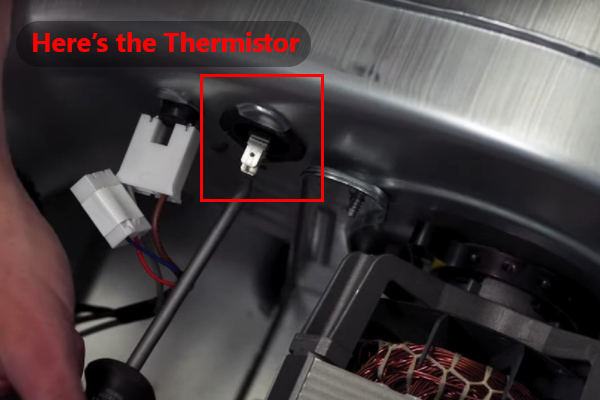
- Take out for testing: Thermostat and thermistor should be carefully removed from their locations. Removing a few screws and unplugging wire connectors could be necessary for this.
- Conduct a Continuity Test:
- Thermostat Test: Set your multimeter to the continuity setting and test the thermostat. A lack of continuity (no beep or no closure in circuit on the multimeter) indicates a need for replacement.
- Thermistor Test: Unlike the thermostat, the thermistor should show a change in resistance with temperature changes. Check the resistance value and compare it to the specifications in your manual. If the readings are out of specifications, replace the thermistor.
The video below is also helpful, showing how to test the thermistor:
- Replace if Necessary: If either the thermostat or thermistor fails the test, replace it with a new component. Attach all connectors as they were originally and secure the component in place.
- Reassemble and Test: After replacing the necessary components, reassemble your dryer and plug it in. Run a test cycle to ensure that the dryer is now heating properly.
Addressing issues with the thermostat or thermistor can restore proper temperature control in your dryer, ensuring your clothes dry efficiently.
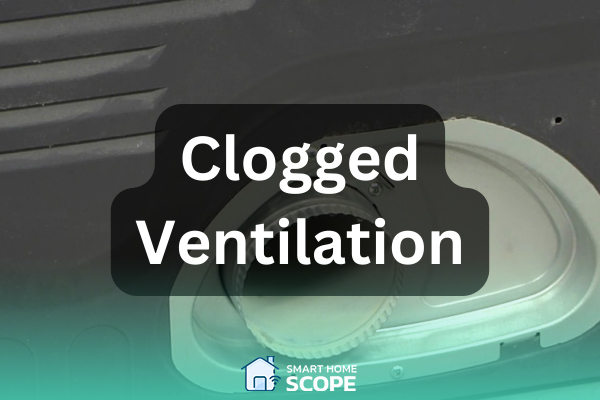
Clogged Ventilation
Clogged ventilation is a typical, yet sometimes disregarded, cause of a Samsung dryer not heating. Inadequate ventilation can cause overheating and consequent component failure, such as thermal fuses and heating elements.
Steps to Clean and Maintain Dryer Ventilation:
- Disconnect the Dryer: Unplug the dryer and, if it is a gas model, make sure the gas line is turned off before disconnecting it.
- Examine the Lint Trap: Emptying the lint trap is the simplest place to start. Remove the lint trap and clean any accumulated lint with a brush or your hands.
- Examine the Vent Pipe: Disconnect the dryer’s ventilation hose from the back. Check for obstructions in the hose. If there is any visible lint or debris, clear it out with a vacuum or specialized vent cleaning brush.
- Clean the Vent Pathway: The dryer vent channel may occasionally become clogged with lint and other debris. Thoroughly clean this area, typically located beneath or behind the lint trap.
- Inspect and Clean the External Vent: Proceed outdoors to the point where your home’s dryer vent exits. Verify that nothing, such as nests or accumulated lint, is obstructing the flow of air. Clean as needed to maintain a clear path.
- Reconnect Everything: After everything has been thoroughly cleaned and inspected, reattach the vent line to your dryer, being careful not to kink or bend it, as this can also impede airflow.
- Check the dryer: To ensure that the dryer is heating up and the air is flowing properly, plug it in and, if necessary, reconnect the gas.
Maintaining the airflow in your dryer on a regular basis not only helps to solve the Samsung dryer not heating up issue but also ensures the dryer runs smoothly for longer. A well-maintained ventilation system lowers the possibility of lint accumulations becoming fire hazards.
More Advanced Fixes for a Samsung Dryer Not Getting Hot
Below you can find more advanced fixes for the Samsung dryer not heating issue.

Checking and Replacing Drum Rollers and Bearings
Wear on the drum rollers and bearings may be the cause of strange noises your Samsung dryer is producing, such as squeaking or grinding. The drum can spin smoothly because of these parts, which also support it. To continue performing at their best, they may eventually wear out and need to be replaced.
Steps to Inspect and Replace Drum Rollers and Bearings:
- Safety first: Unplug the dryer. For safety reasons, make sure the dryer is unplugged from the power source.
- To get to the drum: After removing the dryer’s front panel, remove the top panel as well. Unscrewing multiple screws is typically required for this. For detailed instructions, consult the dryer’s handbook.
- Find the Drum Rollers: The rear and occasionally the front of the drum are where the drum rollers are usually found. Take note of any wear or damage on each roller.
- Verify the Rollers: Turn each roller by hand. Without any rigidity or sound, they ought to be able to rotate freely. Any noisy or jerky spinning rollers must be changed.
- Take Out Damaged Rollers: To take out a damaged roller, unscrew or disconnect the clamps that are keeping it in place, then slide the roller off the shaft.
- Check the Shafts: Inspect the shafts for indications of deterioration or wear. Prior to putting in new rollers, wipe them down with a cloth.
- Installing New Rollers: Slide the replacement rollers onto the shafts and fasten them firmly using the original screws or clips.
- Reassemble the Dryer: After replacing each roller, reassemble the dryer’s top and front panels.
The video below can help you find and replace the drum rollers:
The longevity of your dryer depends on replacing worn-out drum rollers and bearings, which can also significantly reduce the noise level while the dryer is in use.
Revitalizing the antiquated drum rollers and bearings not only fortifies your dryer’s longevity but also hushes its mechanical symphony.

Inspecting the Dryer Belt and Idler Pulley
The dryer belt and idler pulley are common mechanical problems with Samsung dryers. The drum is rotated with the assistance of the dryer belt, which is tensioned by the idler pulley. The correct heating of the dryer may be compromised if one or both of these parts malfunction, as it may cause the drum to rotate unevenly.
Steps to Inspect and Replace the Dryer Belt and Idler Pulley:
- Disconnect the Dryer: As usual, make sure the dryer is unplugged and that the gas supply is turned off, if necessary.
- Access the Dryer Belt and Pulley: Take off the dryer’s front and top panels. This will allow you to access the belt and pulley and expose the drum. Please see the dryer’s handbook for further instructions on removing the panel.
- Examine the Belt: Examine the belt for indications of wear, such as looseness, fraying, or cracks. The drum may not rotate correctly due to a loose or defective belt, which could result in inefficient heating of the dryer.
- Check the Idler Pulley: Look at the idler pulley for wear and ensure it turns smoothly without wobbling or making noise. A malfunctioning pulley can lead to belt slippage or breakage.
- Replace if Necessary:
- Belt Replacement: If the belt is damaged, slip it off the drum and thread a new belt around the drum, idler pulley, and motor pulley according to your model’s routing diagram.
- Pulley Replacement: If the idler pulley is faulty, remove the mounting bolt that holds the pulley in place, replace it with a new pulley, and re-tighten the bolt.
- Reassemble and Test the Dryer: Reassemble the dryer’s panels when the belt and pulley have been changed or are in good condition. To make sure the dryer heats up correctly and the drum moves smoothly, plug it in and start a test cycle.
For your Samsung dryer to function properly, the dryer belt and idler pulley must be kept in good condition. By taking care of these parts, you may extend the dryer’s lifespan and guarantee steady heating, successfully overcoming and preventing the Samsung dryer not heating up issue.
When to Seek Professional Help for a Samsung Dryer not Heating Up?
While you can diagnose and fix many problems with your Samsung dryer at home by following the instructions, there are certain situations when you should get expert assistance for your Samsung dryer not heating up. Acquiring the knowledge of when to summon a qualified expert will help you avoid wasting time and save further harm to your equipment.
Scenarios Where Professional Help is Recommended:
- Electrical Issues: If you suspect the problem involves the dryer’s electrical system (beyond just a blown fuse or defective heating element), it’s safer to have a professional handle it. This includes issues with the main control board or intricate wiring problems.
- Gas Dryer Concerns: For gas dryers, any problems related to the gas supply, ignition, or smell of gas should be addressed by professionals due to the potential safety risks.
- Recurring Problems: If you’ve attempted repairs based on common troubleshooting steps and the problem persists or if the dryer has multiple ongoing issues, professional diagnostics and repairs might be necessary.
- Lack of Tools or Technical Confidence: Some repairs require special tools or a high level of technical skill. If you feel uncomfortable performing these repairs or lack the necessary tools, calling a technician is a wise choice.
Benefits of Using Certified Technicians:
- Expertise: Certified technicians have the training and experience to diagnose and repair complex issues efficiently.
- Safety: Professionals ensure that repairs are done safely, reducing the risk of injury or further damage to your appliance.
- Warranty Protection: Many repairs done by certified professionals come with a warranty, giving you peace of mind and protection against future problems.
Cultivating the discernment to call an expert for your Samsung dryer will save time and prevent further damage.
What Are The Latest Heating Technologies in Samsung Dryers?
Heat Pump
I know heat pump technology as the Tesla of dryers. This feature is becoming increasingly popular thanks to the amount of efficiency and energy saving that it provides! The traditional dryers used to just blast hot air on your clothes! But heat pump, recycle warm air, recycling your stuff gently and efficiently. This feature is more eco-friendly, more effective, and even easier to install thanks to being ventless! What else could you want!
AI Smart Dial: Your Personal Laundry Assistant
Just like any other automation system in a smart home, the AI smart dial’s power lies in its ability to learn your laundy habits. The AI figures out and recommends your favorite laundry cycles, thus making the drying process easier, there’s no need for going through settings every time you want to dry your clothes!
SmartThings Integration
The integration of SmartThings into Samsung dryers means you can turn on your dryer while being out having a cup of coffee! Using your smartphone, you can start, stop, or schedule cycles remotely, you are also informed when the process is complete with notifications. This is how cool the smart technology can be!
Sensor Dry Technology
This technology you are never faced with shrunken sweaters or crispy jeans after the drying process. It adjusts the temperature and duration based on the moisture levels in your clothes. Imagine having a personalized spa treatment for each load!
Steam Sanitize+: A real Germ & Wrinkle killer
If you’re like me, you definitely hate odors and wrinkles on your clothes. This is where Steam Sanitize+ feature helps. It removes 99.9% of germs and bacteria, deals with odors, and reduces wrinkles, leaving you with hygiene clothes that have good smell and are almost wrinkle-free.
Conclusion
In conclusion, since the Samsung dryer not heating up is a common issue for this device, your problem can be resolved using the troubleshooting techniques mentioned in this article. However, if you’ve gone through these fixes and are still left with a Samsung dryer not getting hot, or you’re too confused, don’t hesitate to seek professional assistance. Our staff at Smart Home Scope can help you with the issue.
FAQs
Why is my Samsung dryer running but not heating?
Make sure your Samsung dryer isn’t on air-fluff or no-heat mode by checking the settings if it works but doesn’t heat up. Check the electrical panel of the house for any tripped circuit breakers as well. Common problems that can limit heating capability include a blown thermal fuse, a malfunctioning heating element, and clogged ventilation.
How do I reset the heating element on my Samsung dryer?
There is no dedicated heating element reset for Samsung dryers. Reset the dryer by unplugging it for a minute and then plugging it back in. Resetting the electronic controls in this way often fixes little operational problems. Checks for parts like the thermal fuse or heating element may be required if heating issues continue.
Where is the Samsung dryer reset button location?
There usually isn’t a physical reset button on Samsung dryers. Unplug the appliance, give it a minute, then plug it back in to reset it. The dryer’s electronic controls are reset by this procedure. Refer to the dryer model’s user manual for instructions on how to perform particular electronic control resets.





